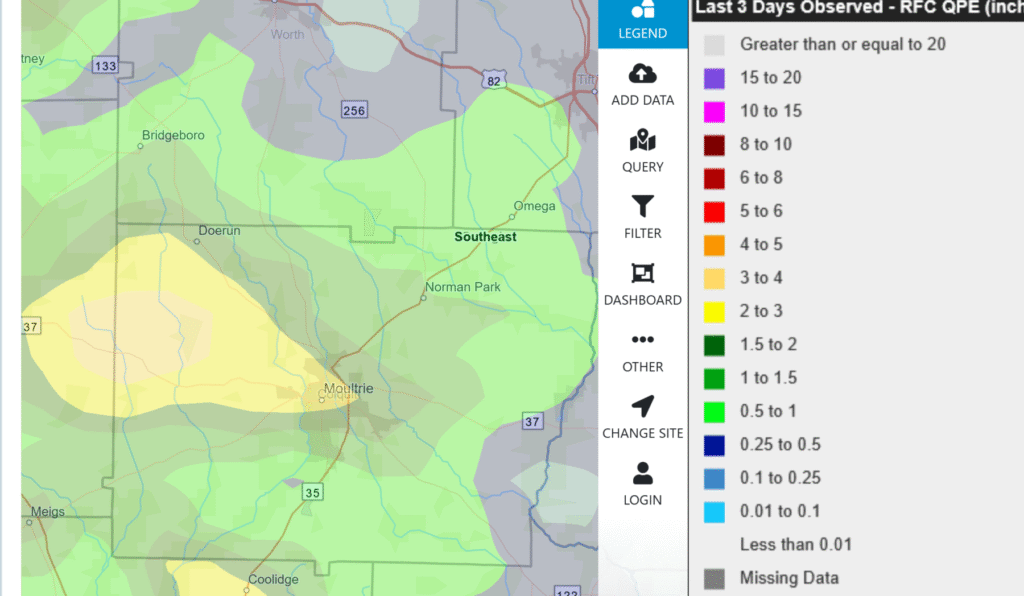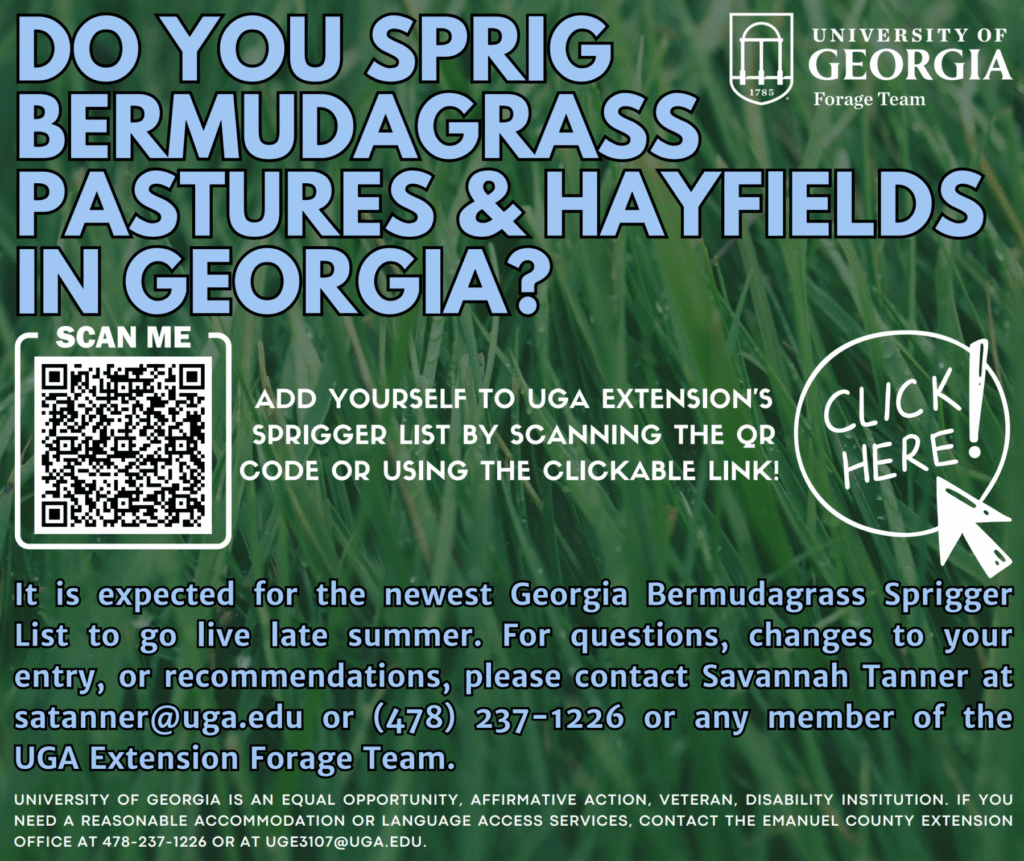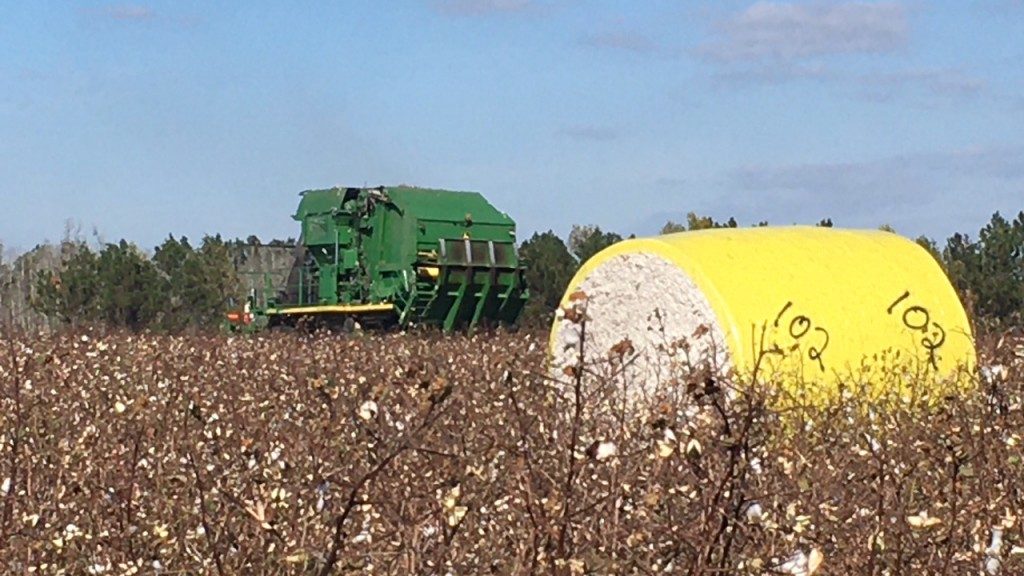2025 Cotton, Peanut, and Soybean Insect Scout Schools
Insect scouting schools will be conducted on June 2, 2025 in Tifton and June 10, 2025 in Midville. Crops to be covered include cotton, peanuts, and soybean. These programs offer basic information on insect pest identification and damage, natural enemies, and scouting procedures. The training will serve as an introduction to insect monitoring for new scouts and as a review for experienced scouts and producers. Program topics include, Bug and Larval Insect Pests, Beneficial Insects, Scouting Procedures, Safety, and an In-Field Review. Each program will begin at 9:00 a.m. and conclude at 12:30 p.m.
Location: Tifton Campus Conference Center, Tifton GA
June 2, 2025 9:00 am -12:30pm
Contact for additional information: Tearston Adams (229) 386-3374
Location: Southeast Research and Education Center Midville GA
June 10, 2025 9:00 am -12:30pm
Contact for additional information: Peyton Sapp (706) 554-2119
It has been an interesting week. The illustration below is the estimated 3 day observed rainfall (posted on May 28. 2025) from the National Weather Service. Some areas of Colquitt County has received 3-4 inches of rain. This was much needed rain as cotton and peanut planting is reaching the later side of the planting window.

Corn: The area corn crop ranges from blister stage to V 10. The rain this week has been awesome as growers are reaching higher water requirements in the corn crop. Below is the current locations that have been scouted for southern corn rust which is posted on the National Crop Protection Network website. As you can see we have not found southern corn rust. Tar spot of corn has not been found at this point in time. We have not found soybean rust either. Also, none of these diseases have been reported in other states as well. Several of you have called asking what corn growers should spray as they approach the tassel growth stage.
Here are my suggestions:
1. As no southern corn rust or tar spot has been found yet, growers could wait until disease is found. Of course there is risk we could miss early introductions of southern rust, but we are looking hard.
2. Growers, especially in extreme SW GA who want to play it “safe” could go ahead and spray at VT. If they did, risk is low enough that applications of tebuconazole, propiconszole, or pyraclostrobin are good; application of mixed mode of action products are better (broader spectrum and longer protective window).
3. I would hesitate to spend the money now on our “best” but also most expensive fungicides as I am not sure we should pull that trigger until we know disease has reached us..

I have been getting a question or two about stinkbugs in corn. During ear formation and pollination is the most important foliar pest of corn in Georgia. They can cause feeding damage to small developing ears before silking. This type of feeding injury usually deforms ears into a C or boomerang shape. These ears fail to develop properly and may be more susceptible to infection by diseases. Treat during the ear elongation / vegetative tassel stage (stage V12 to VT) if 1 stink bug per 8 plants is present. During silking/pollination to blister stages (R1 – R2), stink bugs feed through the husk and damage individual kernels. Control is warranted if populations reach 1 bug per 4 plants. Use pyrethroid insecticides if southern green
and green stink bugs are prevalent. If brown stink bugs are prevalent, a high rate of bifenthrin will provide about 75-90% control.
Peanuts: I was noticing a few lesser cornstalk borer (LCSB) in earlier planted peanuts late last week before the rain started. The peanut crop ranges from 35 days to just planted.

Accoring to Dr. Mark Abney, “What do you do if you find LCB in your peanuts? If the infestation is at or above the threshold, you should treat the field with an insecticide. There are currently two active ingredients that provide good efficacy against lesser cornstalk borer in peanut: chlorantraniliprole (Vantacor and others) and novaluron (Diamond).
“But Mark, my peanuts are only 28 days old. Surely I can wait awhile before I spray them.” Waiting to treat LCB is rolling the dice. It is possible that the environmental conditions that made your field favorable for an LCB infestation will change quickly and dramatically enough that treatment would not be profitable. If the infestation is barely at threshold and the extended forecast calls for cooler temperatures and significant rainfall over several days, I might be tempted to wait and see what happens before spraying my peanuts. Otherwise, my advice is to treat the pest. In my opinion, LCB is the insect that poses the greatest risk to most peanut growers in Georgia each year. Growers may be looking for ways to save money in 2025, but not treating LCB when thresholds are exceeded is not one of them.
There is no reason for a preventive treatment for lesser cornstalk borer; if the insect is not present in the field, do not treat. Moth traps provide some indication of LCB activity, but there is no treatment threshold based on moth trap capture. We have seen lots of moths in traps in Georgia peanut fields where larval infestations never developed. LCB moths in a trap are a signal to go scout the field if you are not already doing that on a weekly basis.
“My field is irrigated, so I don’t need to spray LCB, right?” Wrong. You cannot water LCB away with irrigation before the canopy closes in the row middles. Irrigated fields with a full canopy are rarely infested at threshold levels, but prior to that, fields are at risk.
If you have any questions about LCB management in peanut, please contact your local UGA County Extension agent.”
Pegging Zone Sampling in Runner Peanut Peanuts have a high calcium requirement. Calcium must be available to the developing peg and pod in a water soluble form in the pegging zone area. If you need to apply calcium (in the form of gypsum, landplaster) it needs to be applied at early flowering. Pull the sample slightly offset of the peanut row about 3 inches deep. Pegging zone samples need to show 500 pounds of soil test calcium. If you are at the 500 mark or better and you have a 3 to 1 calcium to potassium ratio then calcium requirements should be met. If you do not meet EITHER of these requirements then you need to apply 1000 lb/a gypsum at early bloom. Also, all peanuts grown for seed should automatically receive this gypsum application, regardless of soil test calcium levels. Soil sample bags are available at the Extension Office if you would like to do pegging zone tests.
Dr. Wes Porter has some information on sprayer calibration in one of his latest blog posts.
I have received numerous calls about nitrates in summer annual forages this past week. Growers need to identify and test all forages that may have accumulated nitrates. Below are a few points to consider about nitrates in forages.
- Nitrogen fertilization increases the risk of nitrate accumulation.
- Some plants accumulate nitrates at a greater rate.
- Split applications of nitrogen fertilizer (organic or inorganic) within the growing season.
- Do not harvest or graze forage within seven days following a drought-ending rain.
- Do not feed green chop until the whole plant has been tested for elevated nitrate concentrations.
- Harvest the crop as silage when possible.
- Nitrates tend to be highest in the lower stem and leaves.
- Increase the harvest height to minimize the inclusion of lower plant parts and low growing weeds.
- Do not graze crops closely.
- Use field test kits to rule out samples low in nitrates but confirm field results with a laboratory analysis when results indicate moderate or higher levels of nitrate (>2,500 parts per million–ppm).
- Dilute high nitrate forages with feedstuffs that are high in energy.
- Provide plenty of clean water and supplement with sufficient vitamins and minerals.
- Avoid or minimize feeding forages that are high in nitrates to lactating, pregnant, or sick animals.
- Limit animals to 3 or 4 hours of access to high-nitrate hay per day so that intake is limited to approximately 50 percent of normal. Supplement the lower hay intake by feeding a grain or by-product feed (6 to 10 pounds per day depending on lactation status and forage quality) BEFORE allowing the animals to access the high-nitrate hay.

Have a safe week and if you have questions please call the office,
Jeremy M. Kichler
Colquitt County Extension Coordinator
The University of Georgia Cooperative Extension does not endorse or guarantee the performance of any products mentioned in this update.
